Winnipeg Exchange District Ghost Signs
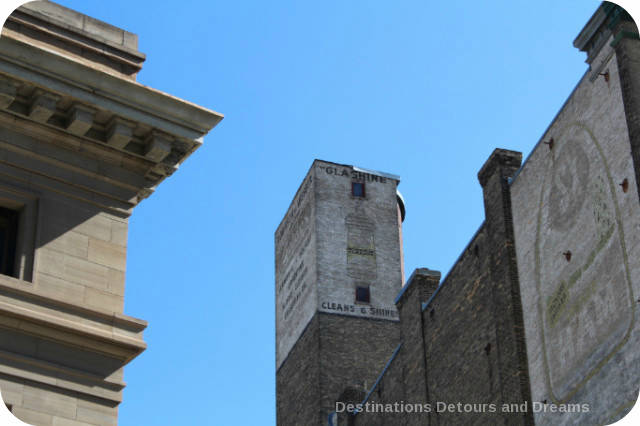
Faded painted advertisements on buildings in Winnipeg’s historic Exchange District tell stories of the past
This article is not about signs indicating the presence of ghosts or paranormal activities. It is about ghost signs, hand-painted advertising signs preserved on the outside of old buildings. These ads, also known as fading ads or brick ads, were prevalent from the 1890s to the 1960s.
A large number of ghost signs can be found in Winnipeg’s Exchange District. The Exchange District is one of the best-preserved early 20th century commercial districts in North America. It contains 150 buildings spread over 20 blocks and was named a National Historic Site in 1997.
I’ve been interested in these signs for a while and learned more about them when I took a walking tour with Matt Cohen, who has spent much of his free time over the last few years researching the fading signs of the Exchange.
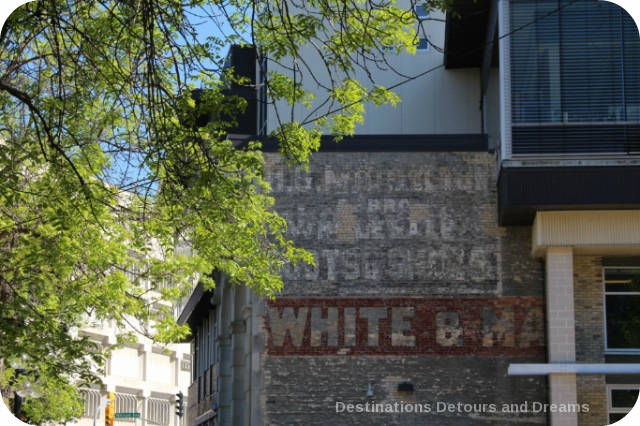
Initially signs were primarily text. Later, images of the products being promoted were used.
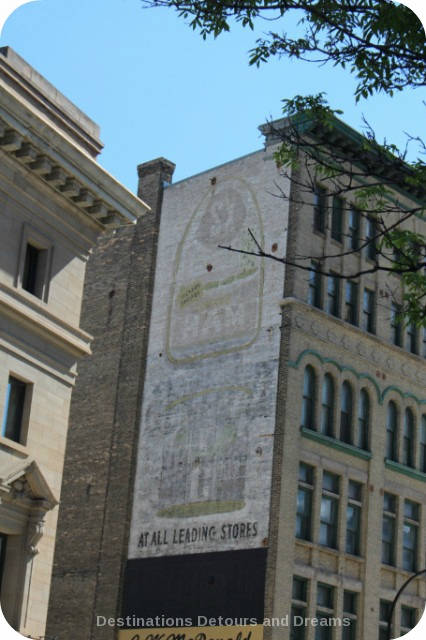
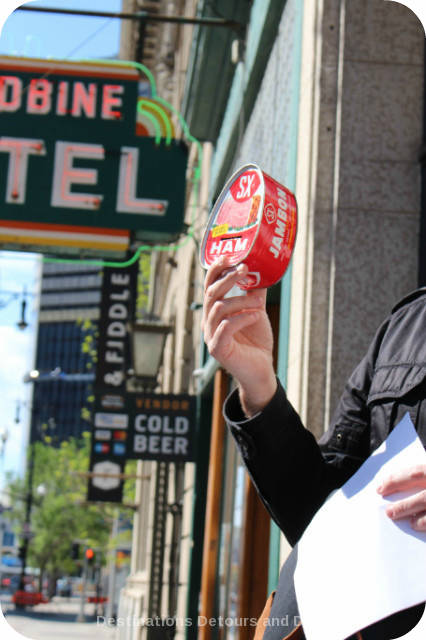
Why are so many of the ads still visible? Many are on brick buildings and brick is porous. The original paint used was oil-based and strongly adhered to brick. Most paints contained lead. Signs would be painted over, sometimes just to refresh the existing ad, sometimes to place a new ad. Over time, the original ad sometimes began to show, “ghosting” through what was painted over it.
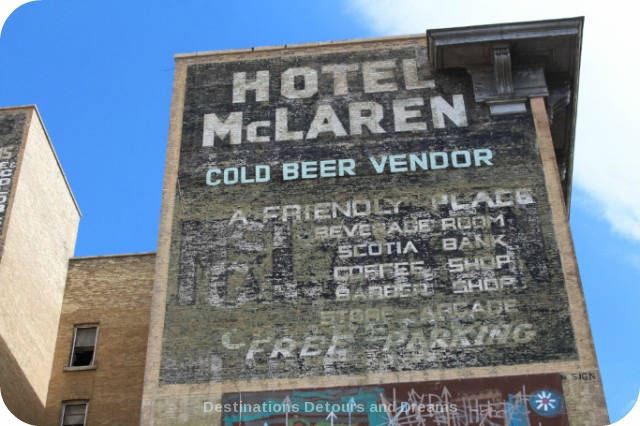
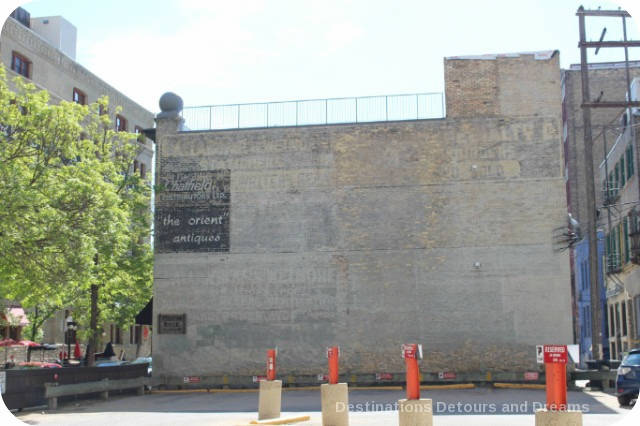
The signs speak to the commerce of the time and give added insight into history.
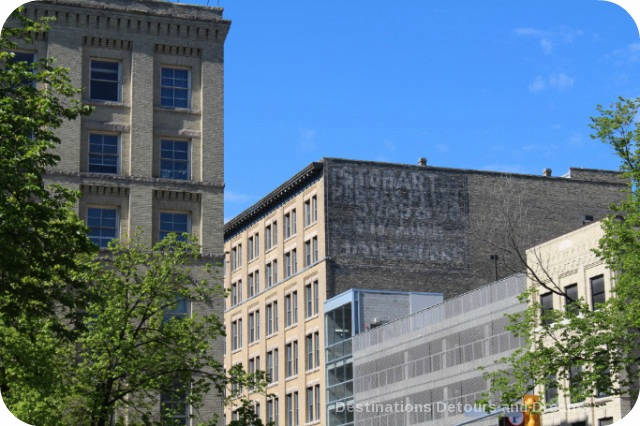
English coal merchant D.W. Stobart started a wholesale dry goods operation in 1899. In 1903, he branched into manufacturing and trademarked his own “No. 1 Hard” brand of overalls and work shirts. In 1914, he opened his own mail order business called the Christie Grant Company, which operated until 1922. Eventually, the company became Stobart, Sons and Company, operating in Winnipeg until 1939.
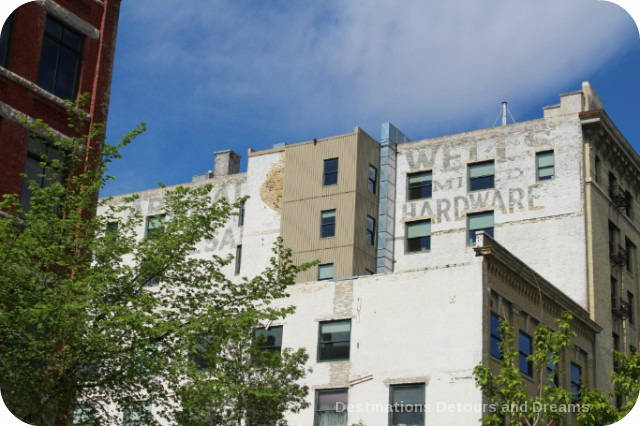
Marshall-Wells Hardware Company, based in Duluth, Minnesota, expanded into Winnipeg in the 1890s, first by having a one man representative, then with the construction of a warehouse on Bannatyne Avenue. They built the warehouse on Market Street (shown in above photo) in 1905, extending the property a year later and adding four storeys in 1912. They operated out of that building until 1956, when they relocated to an industrial area in west Winnipeg. In 1957, Canadian holdings were sold and the company became Marshall-Wells of Canada. Through a series of acquisitions and mergers, the Company’s name and trademark were eventually lost when parent company Cochrane-Dunlop, who had bought the chain from the Hudson’s Bay Company, went into bankruptcy in 1988.
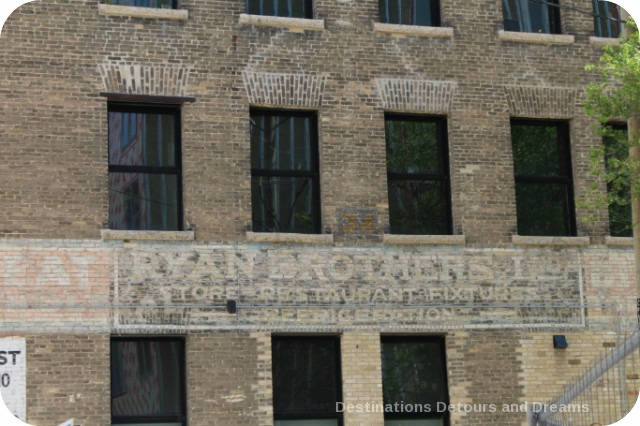
Ryan’s Brothers Ltd was formed in 1906. It started as a dry goods operation and diversified into refrigeration and store fixtures. The company stopped operating in 1954 when founder George Ryan retired. Barely visible in the photo above is gold numbering above the sign. The number “34” marks a stop on what was once a spur rail line in Winnipeg’s east Exchange area, allowing warehouses to easily get goods to the main rail line. The spur line numbers remain more visible on other buildings in the area.
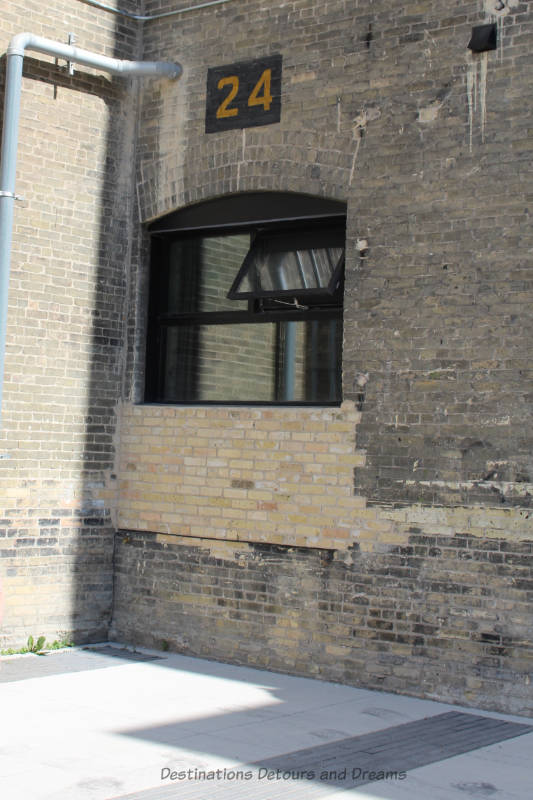
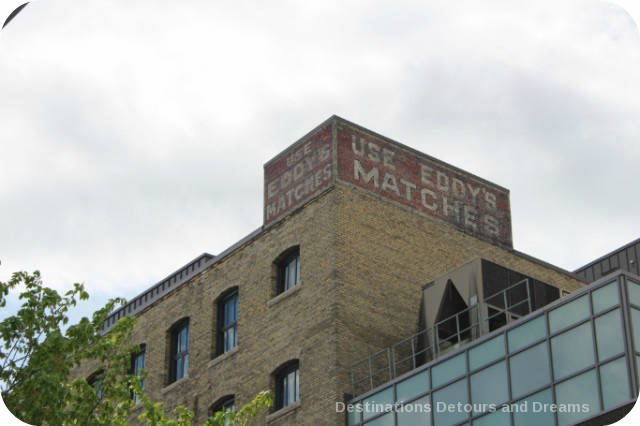
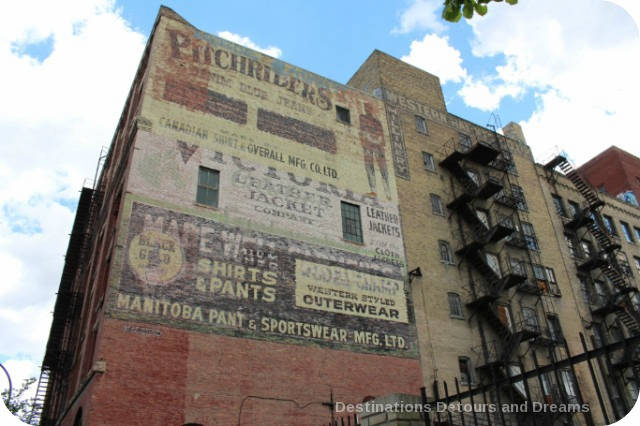
Under many of the ads, you can find a smaller sign, which at first glance may look like faded street names. They contain sign painter company names. It was common for the sign painting company to “sign” their work. Matt told us you can find many of the same company names in other cities in western Canada.
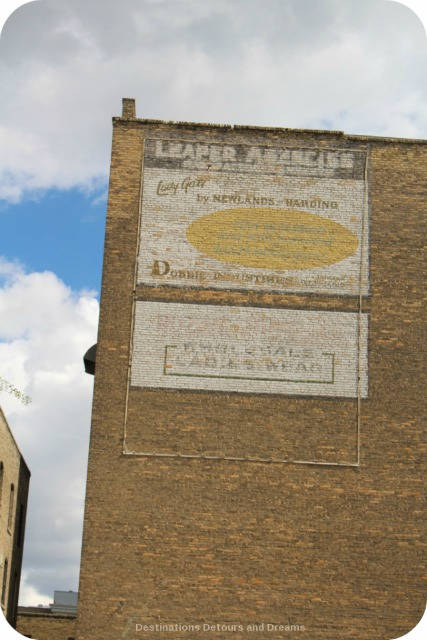
Eventually it became cheaper to create vinyl signs and attach the already prepared signs to the buildings. They didn’t last as long, but they were cheaper to create.
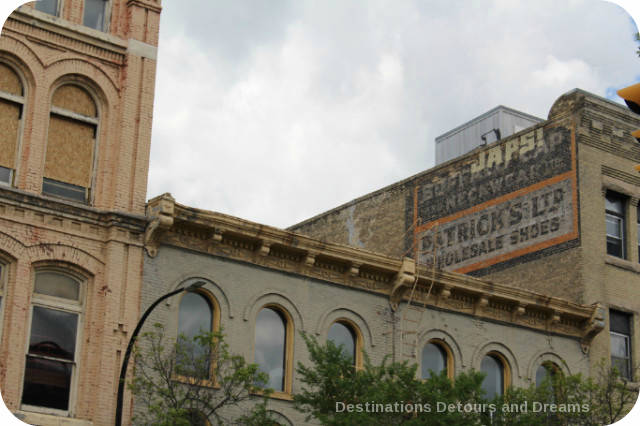
Patrick’s Footwear was founded in the 1930s. They sold shoes and boots to the public at wholesale prices. They operated out of the building above at 222 McDermot until 1957 when the business moved and renamed itself Canadian Footwear. Canadian Footwear is still in operation. The yellow “JAPS” lettering is not part of the sign. It is graffiti. While some may be offended by the presence of graffiti on ghost signs, Matt told us it didn’t particularly bother him. The signs themselves represent a point in time and someday will fade out of existence. The graffiti also represents a point in time.
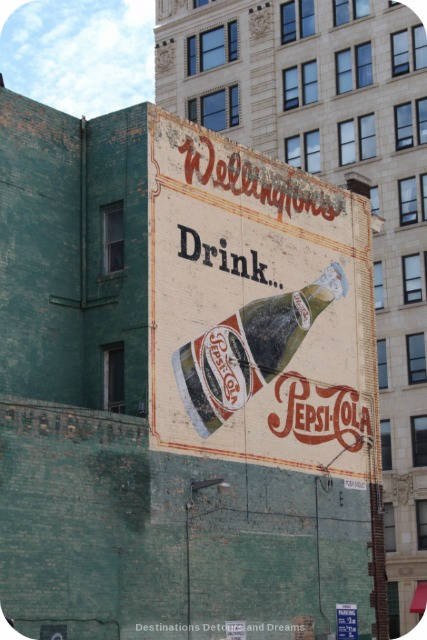
Although the Pepsi sign in the above photograph features a 1940s style bottle, the sign was actually painted in the 1980s, so it is not a ghost sign. Or is it? What makes a sign a ghost sign? The 1980s are now almost four decades in the past.
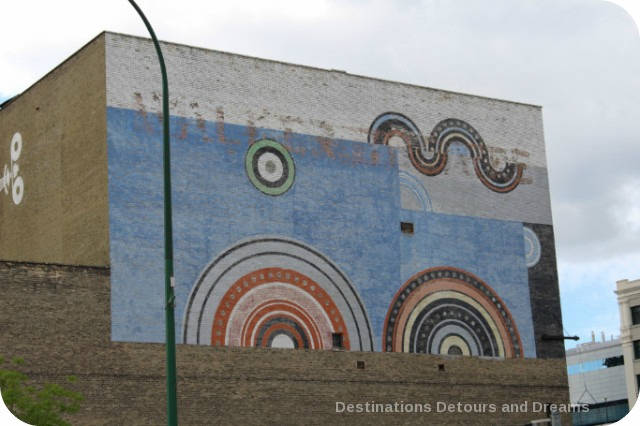
Ghost signs may remain on buildings because of past neglect, with no one bothering to paint over them. Today, they are often retained for their nostalgic value. Sometimes, ghost signs are discovered during demolition or renovation of a building, when a wall that was boarded over or covered is uncovered. Ghost signs exist in other parts of Winnipeg, but the greatest concentration is in the Exchange District. Painting over the signs on the buildings within the bounds of the National Historic Site is not allowed, although one can hang a detachable sign over a ghost sign. Red River College’s Patterson Food Institute created controversy when they did that and covered up a faded blue Royal Bank of Canada sign.
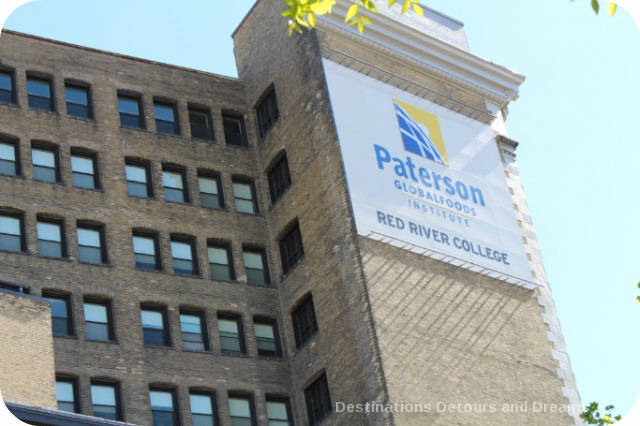
In 2016 Matt Cohen spoke at TEDx Winnipeg. His six and half minute Hiding in Plain Sight: Uncovering History through Ghost Signs talk can be viewed online.
Next time you are walking through an historic district or are among older buildings, you may want to look up to find the ghost signs.
If you enjoyed this post, sign up for Destinations Detours and Dreams monthly e-newsletter. Get behind the scenes information and sneak peeks ahead in addition to a recap of the month’s posts.
PIN IT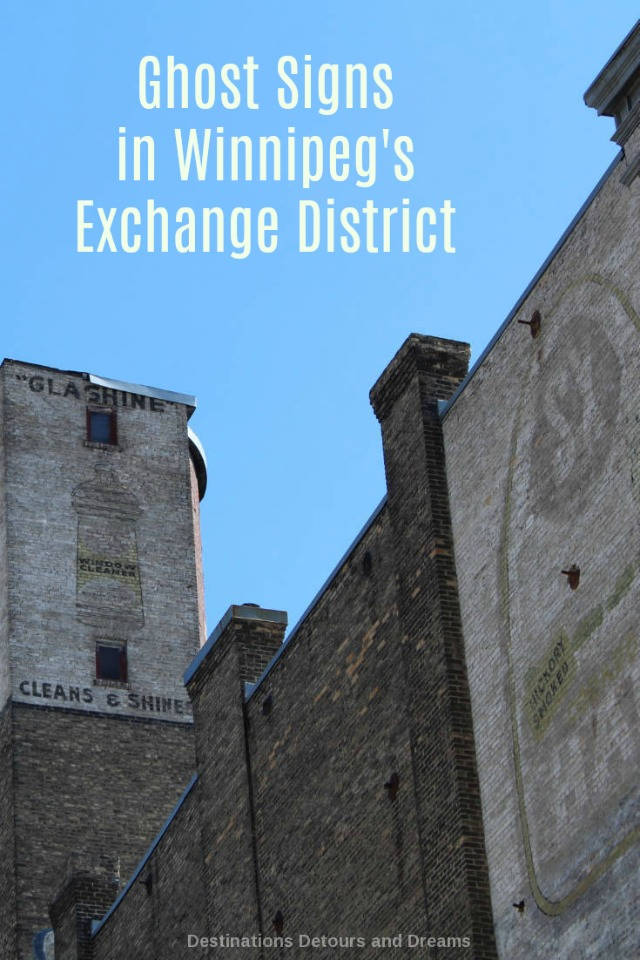


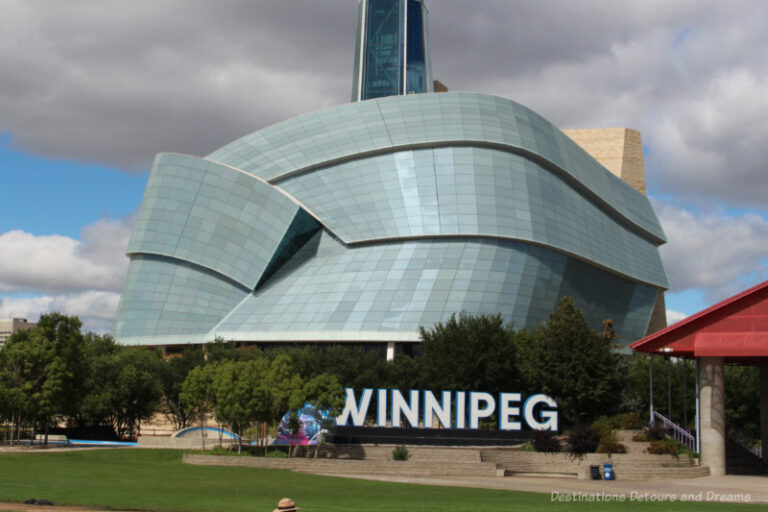
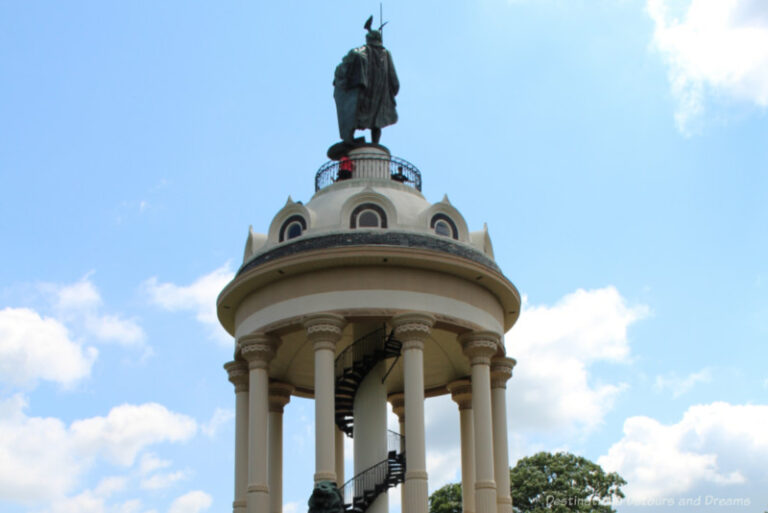
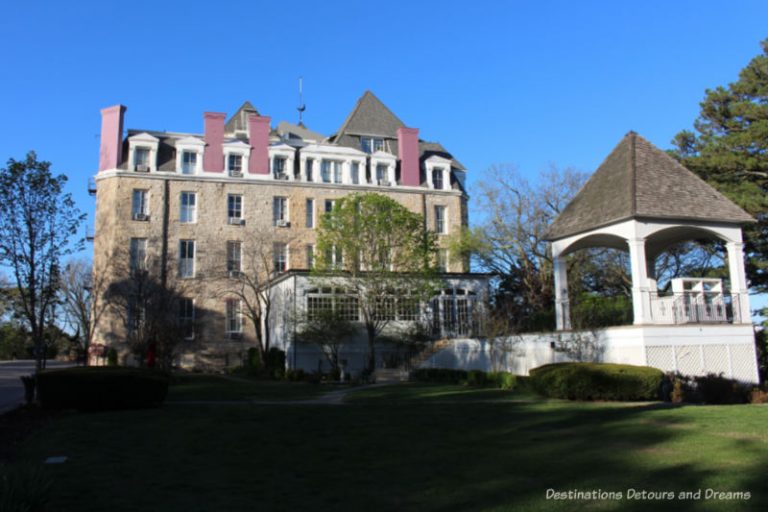
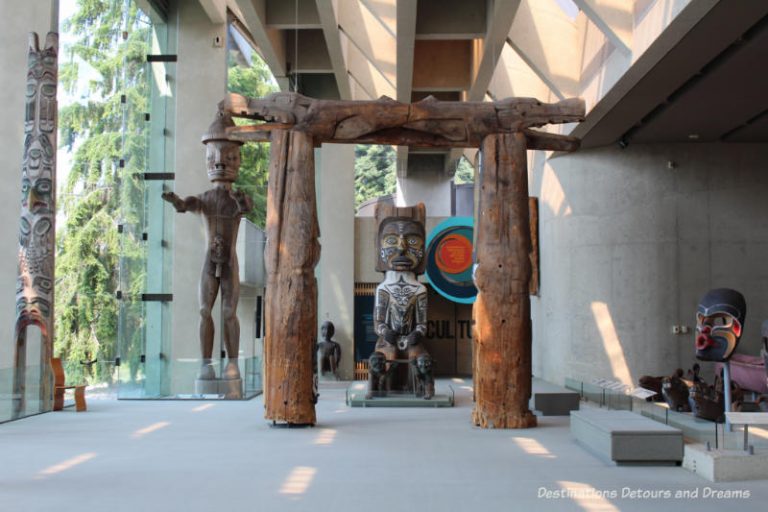
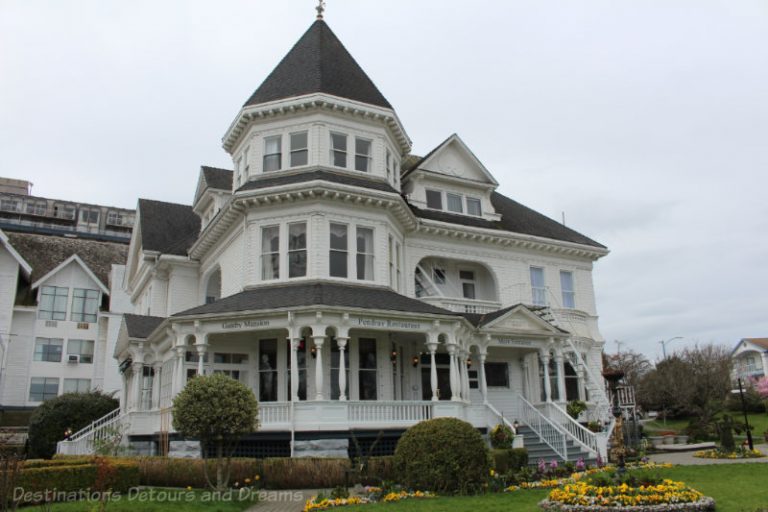
Fun stuff. You have to love a building that has H-A-M in giant letters on its side. And I’ve never accounted matches of such a personalized brands as Eddy’s.
Ken, it is fun stuff. Eddy’s wooden matches came in interesting boxes – I think these are vintage now too.
I often take pictures of ghost signs when I notice them, but have never followed through and researched the company. I love seeing the older styles of advertising still visible.
Rachel, it is interesting to see the older style of advertising. I enjoyed that Matt and his colleagues have done research on the companies.
What a great collection of “ghost” signs. I remember a ghostly image of the Planter’s Peanut man that could be seen in that neighbourhood. I wonder if it’s still there?
Michele, I don’t know if the Planter’s Peanut man is still there or not. I didn’t see it and it doesn’t show up in the online gallery the Advertising Association has put together so far. I will keep my eyes open when I’m in the area.
I live in Philadelphia which has a loooong retail store and manufacturing history. Brick was a popular building material, so we have quite a few what I now know are “ghost signs”. I wonder if they’re protected. They do convey a sense of history that it would be a shame to lose.
Suzanne, they do convey a sense of history. Eventually they will fade away and be lost, but it is nice if they can be kept as long as possible.
So many interesting stories behind the ads for family businesses, many that would be all-but forgotten but for the ghost signs. Over the years I’ve noticed them on many old brick buildings across the US in old areas of cities (coca cola signs seem to be the most popular) and I was interested to learn that they’re long lived because of how the oil-based brick sank in and adhered to the brick. What an interesting tour and I’m glad the history of the signs is being preserved! Anita
Anita, it was an interesting tour. It was nice to learn more about the signs and I’m sure I’ll be more aware of them to other places I travel to now.
I did not know these acts of retro coolness are called ghost signs. Love that. I have seen them in other cities and will pay attention in the future.
Charles, it is a cool name for the signs. I’ll be paying more attention now too.
I am in Melbourne for 4 months and on my walk through the Central Business District, I took photos of ghost signs…like that of the Melbourne Steamers. And here you are writing about them. Yes, I find nostalgia in the history and culture rolled into one large physical memento.
Carol, the signs are fascinating – I can see why you were taking photos.
Very interesting, Donna. I’d often wondered why the buildings don’t just wash those off, but they are indeed a part of the city’s history.
Doreen, they are part of the city’s history. And after what I learned on the tour, I guess they wouldn’t wash off easily if someone tried.
I’ve never given ghost signs much thought, but your post instantly brought a ton of them to mind that I’ve noticed over the years in various places I’ve visited. Thanks for that 🙂
Jeri, the signs are probably around more than realize until we start looking for them
Very cool. I love seeing these old signs in various places – seeing them lit to look like they did originally would be really cool.
Cindy, I hope I’ll be able to make it to the Painted in Light display. It does sound cool.
I always look out for these “ghost signs” when I’m exploring a new city. They tell you so much about the history of an area.
Karen, I have paid much attention to these signs in cities I’ve visited, but that will change now.
You see so many posts about street art which is typically graffiti. Interesting to see your take on it with these ghost signs. I personally love them (being an old advertising gal!)
Jane, I find these signs very interesting and I am not an old advertising gal.
This post is great fun to read, Donna! Pittsburgh is covered in ghost signs and yet I’ve never thought to inquire about them. I wonder if anyone here is taking a lesson from Winnipeg and creating a digital history of them–what a great idea. And, sure, I’ll go with the 1980s being a ghost sign!
RoseMary, you may learn more about Pittsburgh when you get curious about some of the signs.
I never knew they were called ghost signs, but have always loved seeing them on old buildings. Boston has quite a few on downtown buildings. I will definitely look at all of them in a new light after reading your post Donna.
Alison, I will also be looking for the signs in other cities I visit.